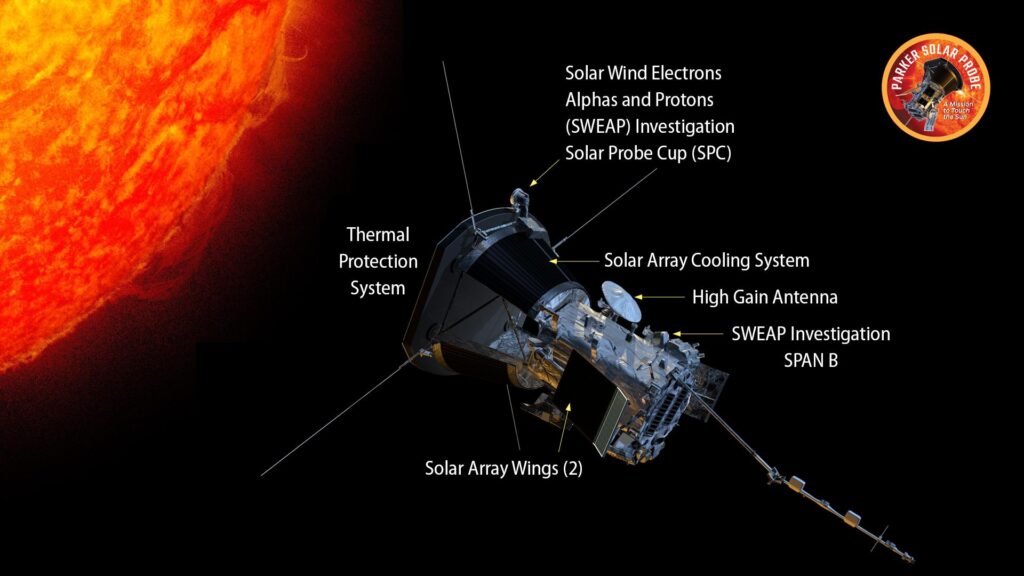In a groundbreaking leap for solar science, NASA’s Parker Solar Probe is delivering unprecedented insights into the sun and the enigmatic solar wind that shapes our cosmic neighborhood. As the spacecraft ventures closer to the sun than any mission before, recent findings are shedding light on the complex dynamics of our star’s outer atmosphere, promising to deepen our understanding of space weather and its effects on Earth. WIS News 10 brings you the latest developments from this moment of scientific discovery, revealing how the Parker Probe is transforming our view of the sun and its powerful influence on the solar system.
Parker Probe’s Revelations Transform Understanding of Solar Wind Dynamics
NASA’s Parker Solar Probe has delivered groundbreaking data that challenges long-held assumptions about how the solar wind accelerates and travels through space. For the first time, scientists are able to observe the near-Sun environment directly, revealing complex magnetic structures and unexpected variations in particle speeds. These insights help explain the erratic behavior of solar wind streams and their impact on space weather, which can disrupt satellites, communications, and even power grids on Earth.
Key findings from the Parker mission include:
- Identification of small-scale “switchbacks” in the Sun’s magnetic field, which appear to flip and fold back on themselves.
- Discovery that solar wind particles gain velocity much closer to the Sun than previously believed.
- Recognition of heated plasma regions that indicate intense magnetic interactions fueling solar wind acceleration.
| Solar Wind Feature | Observed Characteristic | Significance |
|---|---|---|
| Switchbacks | Sudden magnetic field flips | Influence on particle flow direction |
| Acceleration Zone | Within 10 million miles from Sun | Challenges previous distance models |
| Plasma Heating | Localized temperature spikes | Drives solar wind velocity |
Unveiling the Sun’s Outer Atmosphere Through Close-Up Observations
The Parker Solar Probe has dramatically expanded our understanding of the sun’s outer layers by venturing closer to the star than any spacecraft before it. Equipped with state-of-the-art instruments, the probe gathers unprecedented data on the solar corona, a region where temperatures skyrocket to millions of degrees and the solar wind begins its journey through the solar system. These close-up observations have revealed unexpected magnetic structures and turbulent processes that challenge previous theories about how energy and heat travel through the sun’s atmosphere.
Key findings from the mission include:
- Switchbacks: Sudden flips in the magnetic field lines, adding complexity to the solar wind’s behavior.
- Particle Acceleration: Insights into how charged particles gain immense energy, impacting space weather.
- Solar Wind Composition: Detailed analysis of elements carried by the solar wind, crucial for understanding its impact on Earth’s magnetosphere.
| Feature | Observed Data | Scientific Importance |
|---|---|---|
| Corona Temperature | 1-3 million °C | Explains heat transfer mechanisms beyond the photosphere |
| Magnetic Switchbacks | Frequent, rapid flips | Influences solar wind acceleration |
| Particle Flux | Enhanced during close passes | Key to understanding particle energization |
Experts Advocate for Continued Solar Exploration to Protect Earth’s Technology
Recent data from the Parker Solar Probe has significantly deepened our understanding of the sun’s dynamic atmosphere and the solar wind, phenomena that directly influence space weather and have far-reaching effects on Earth’s technological infrastructure. Experts emphasize the critical need to continue funding and advancing solar exploration missions to anticipate and mitigate potential disruptions to satellite operations, communication networks, and power grids caused by solar storms.
Key findings from the probe highlight how the sun’s magnetic fields and particle emissions interact, offering clues essential for developing more robust protection systems for both astronauts and Earth-based technologies. The scientific community outlines several priorities moving forward:
- Enhanced monitoring of solar flare activity to provide earlier warnings
- Improved modeling of solar wind patterns that affect geomagnetic storms
- Development of resilient satellite design to withstand intensified solar radiation
| Solar Phenomenon | Impact on Earth | Recommended Action |
|---|---|---|
| Coronal Mass Ejections (CMEs) | Power grid failures | Grid hardening upgrades |
| Solar Wind | Satellite drag variations | Enhanced orbit tracking |
| Solar Flares | Communication blackouts | Backup communication protocols |
Concluding Remarks
As the Parker Solar Probe continues its unprecedented journey closer to the sun, each new set of data brings scientists a step nearer to unraveling the mysteries of our star and the solar wind that shapes space weather across the solar system. These insights not only deepen our understanding of fundamental astrophysical processes but also hold practical implications for protecting satellites, power grids, and communications on Earth. With every orbit, the mission reaffirms humanity’s drive to explore and comprehend the forces that govern our cosmic neighborhood. Stay tuned to WIS News 10 for the latest updates on this historic scientific endeavor.
